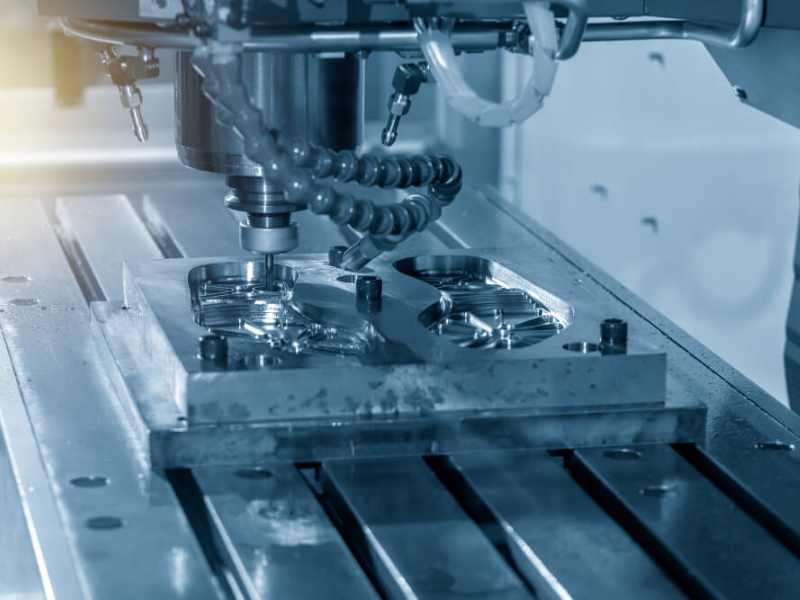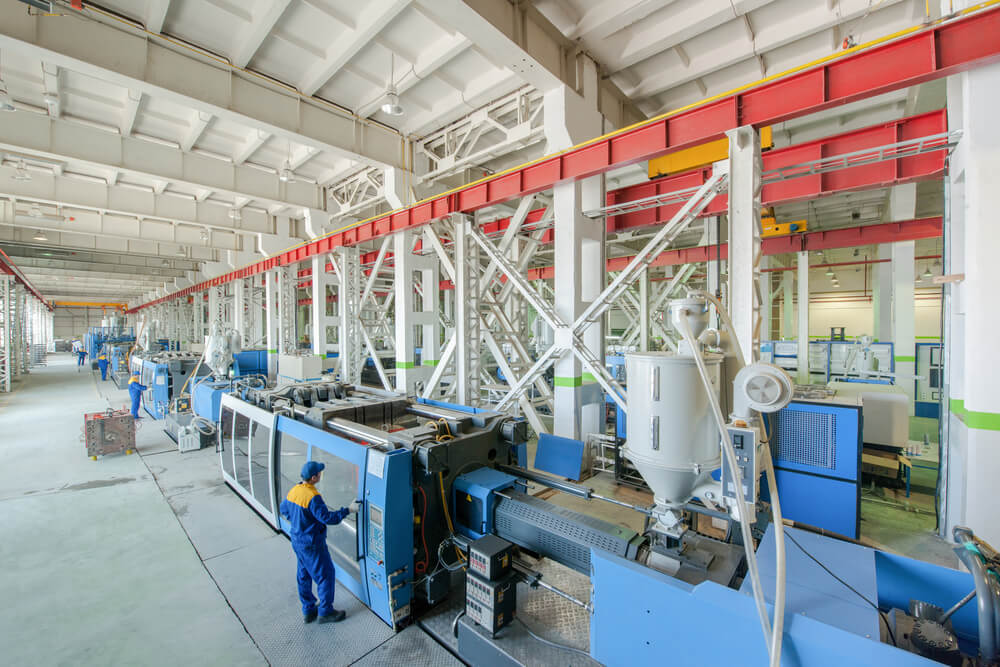Injection molding is an important manufacturing process used in manufacturing industrial components and personal items like toys, toothbrushes, etc. This is one of the most trusted processing methods, especially when producing a large number of identical components with similar quality and dimension. However, it is almost impossible to obtain your desired result without controlled and stable temperatures. That's why in this article, we will explore the importance of mold temperature in injection molding.
Injection molding is one of the most common methods of plastics manufacturing that have been used for decades. This process involves melting plastic in thermoplastic polymers, injecting them into a mold, and allowing it to cool down to a desired range so you can initiate production. These thermoplastics become plastic when subjected to heat, solidified upon cooling, and are able to withstand repeated heating-molding-cooling cycles. Compared to thermosets, thermoplastics are recyclable and generally less fragile.
What Contributes to Successful Injection Molding?
1. Sufficient Residence Time
Filling molds properly will require the use of plastic injection molding machines with accurate time, pressure, and temperature. You should ensure that you configure the right amount of time to help you achieve your desired result: Set your residence time in a way that you do not overheat the material inside the barrel. Insufficient residence time will not only hinder the materials from reaching the desired result but also will cause them to harden prematurely before entering the mold cavity.
2. Correct Injection Pressure
Without the right amount of pressure, the molded outputs would be subpar—air bubbles, flashes, and charred plastic are some common defects. To address this issue, injection pressure, holding pressure, and back pressure are three key areas you should be focusing on. When configured right, these pressures are able to overcome the resistance offset from an injection molding machine, thus promoting smooth filling.
3. Appropriate Temperatures
Last but not least, you need to install a mold temperature controller (or a chiller when you're targeting below-ambient temperature.) to maintain the process at its optimal performance temperature. Each type of plastic has a different activity temperature. Even the same plastic could have a different application range if the polymers come from different sources or grades. Therefore, the temperature profile should be chosen carefully to allow the plastic to be correctly mixed without overheating.
There are three types of temperatures that should be constantly watched for in injection molding: barrel temperature, nozzle temperature, and mold temperature. Among these, mold temperature is the most significant factor that influences a molded product's appearance, structure, and functionality.
What Is Mold Temperature in Injection Molding?
In injection molding, mold temperature refers to the surface temperature of the mold cavity. Different kinds of plastic polymers fall into different mold temperatures scope: For instance, the ideal mold temperature range sits around 60-80℃. This number is 80-120℃ for Polycarbonates (PC), 50-70℃ for Polyethylene (PE), and 40-60℃ for Polypropylene (PP).
To attain high dimensional accuracy, carefully monitor the mold temperature and ensure its even distribution at a reasonable range. Note that uneven mold temperature distribution can result in internal stress and uneven shrinkage. This will make the molding gate susceptible to warping, deformation, and other common injection molding defects.
What Is Injection Molding Cooling Time?
Injection molding cooling time essentially refers to the amount of time the molten plastic takes to solidify. This usually varies with the chosen type of plastic, the chemical composition of polymers, the thickness of the wall, the molded part design (flat or non-flat configuration, for instance), and the demolding temperature of the molding part.
How Is it Calculated?
An injection molding cooling time is calculated using an equation that factors in a series of parameters, including mold and melt temperatures, ejection temperature, part thickness, and thermal diffusivity—by definition, it is the thermal conductivity divided by density and specific heat capacity at constant pressure. Although calculation can be complex, it boils down to 4 primary factors when estimating the injection molding cooling time:
- Part Design. The actual duration of injection molding cooling time largely depends on the product design engineer: the thicker a product is, the longer the production cycle will be. And vice versa, smaller parts with thinner walls will cool faster than larger parts with thicker walls.
- Material Selection and Temperatures. Although plastic is an insulator by nature, transfers heat slightly better in a melted or molten state. Specifically, 3 types of temperatures are used in the equation:
- Melt Temperature. This is the temperature at which the conversion from a solid to a liquid begins.
- Mold Temperature. This refers to the ideal temperature range for surface finish replication of the cavity surface.
- Heat Deflection/Distortion Temperature (HDT). This is the temperature at which a material will deflect when bearing a higher load.
- Mold Design. A properly designed mold helps minimize the injection molding cooling time. Variables include mold sizes and shapes.
- Processing. Fill, pack/hold, cooling, mold open/eject/mold close are the key process segments in most evaluations.
How To Minimize Cycle Time In Injection Molding?
The cycle time in injection molding is an important factor that boosts the efficiency of your process. When you aim for injection molding cycle time, you may start to identify room for improvement in terms of productivity and better cost efficiency. Some of the key aspects to consider during optimization are:
- resin heating
- injection
- packing and holding
- cooling
- ejection
- quality assurance
The last point is crucial, as you wouldn't want to leave your cooling time so short that it causes part defects and rejections.
Why Applying Mold Temperature Control?
An ideal mold temperature control system is able to facilitate heat exchange between the mold and melt. Also, it heats the mold to the desired injection temperature. Specifically, effective mold temperature control provides the following advantages:
- preventing creep resistance
- preventing fatigue resistance
- fostering wear resistance
- achieving dimensional stability
- mitigating material crystallization
Cooling and Injection Molding Cooling Time Reduction
As discussed earlier, injection molded parts are shaped and dimensionally accurate as a function of appropriate temperature control during dosing, filling solidification, and production efficiency. Moreover, generally speaking, 80 to 85 percent of the molding cycle is spent cooling the plastic part. The goal is to reach a temperature that's rigid enough to withstand the forces of ejection. Hence it is advisable to address mold temperature in injection molding with an industrial chiller solution.
To effectively perform sufficient heat reduction within a mold, check out Flying Tiger's industrial water/air chillers models or Contact Us directly to find your ideal solution for mold temperature in injection molding!
Back








